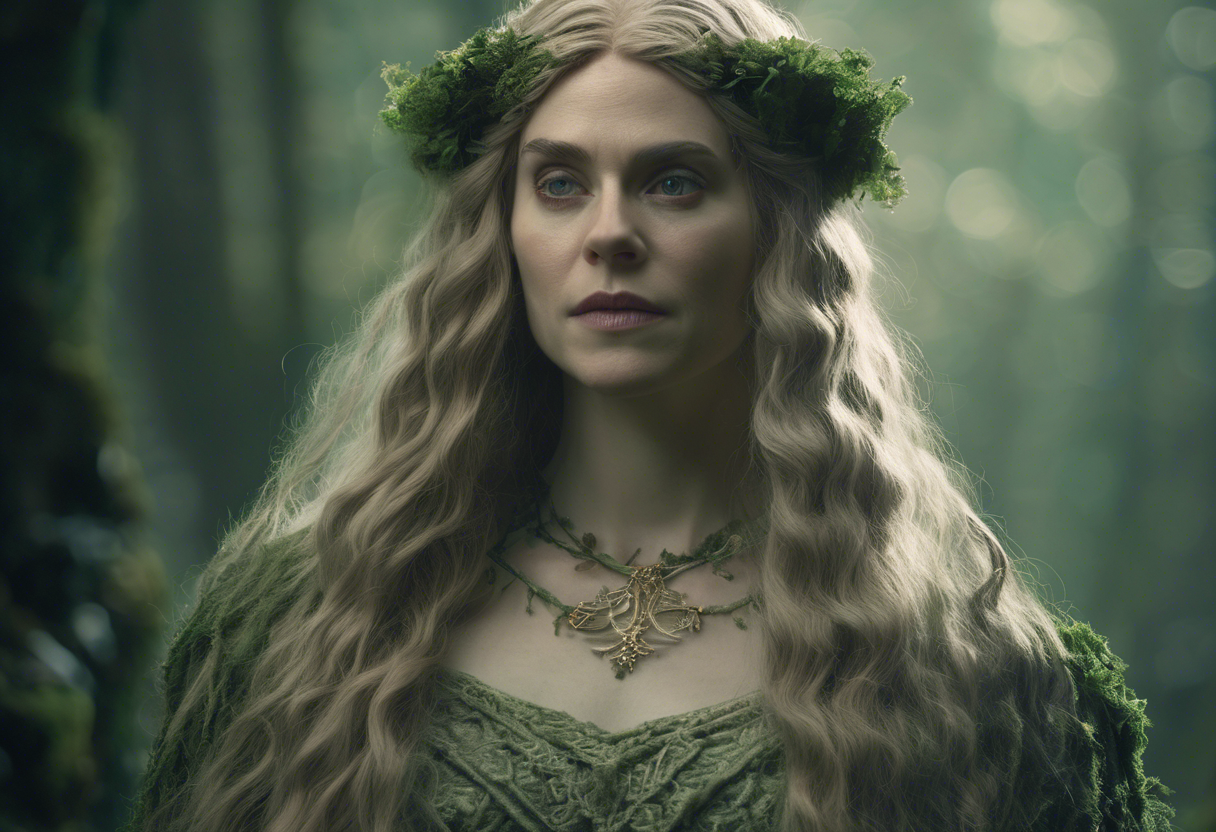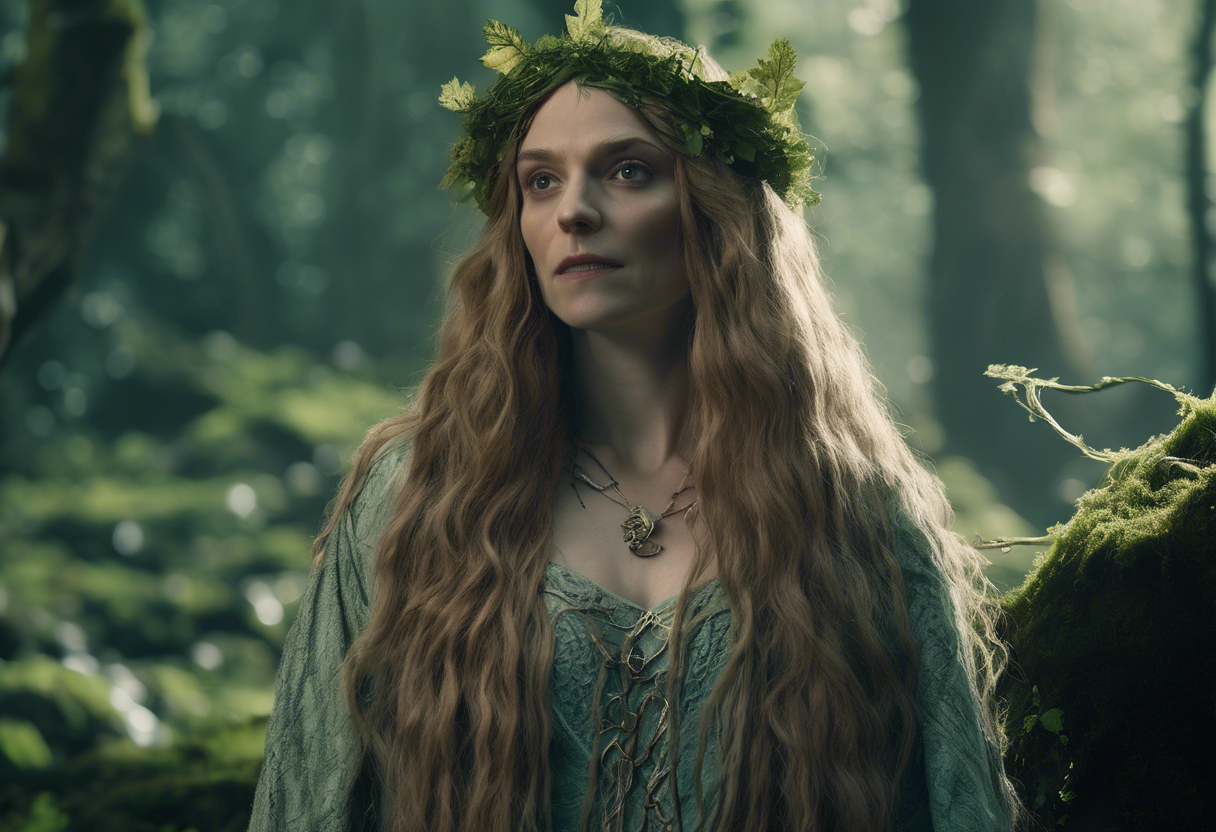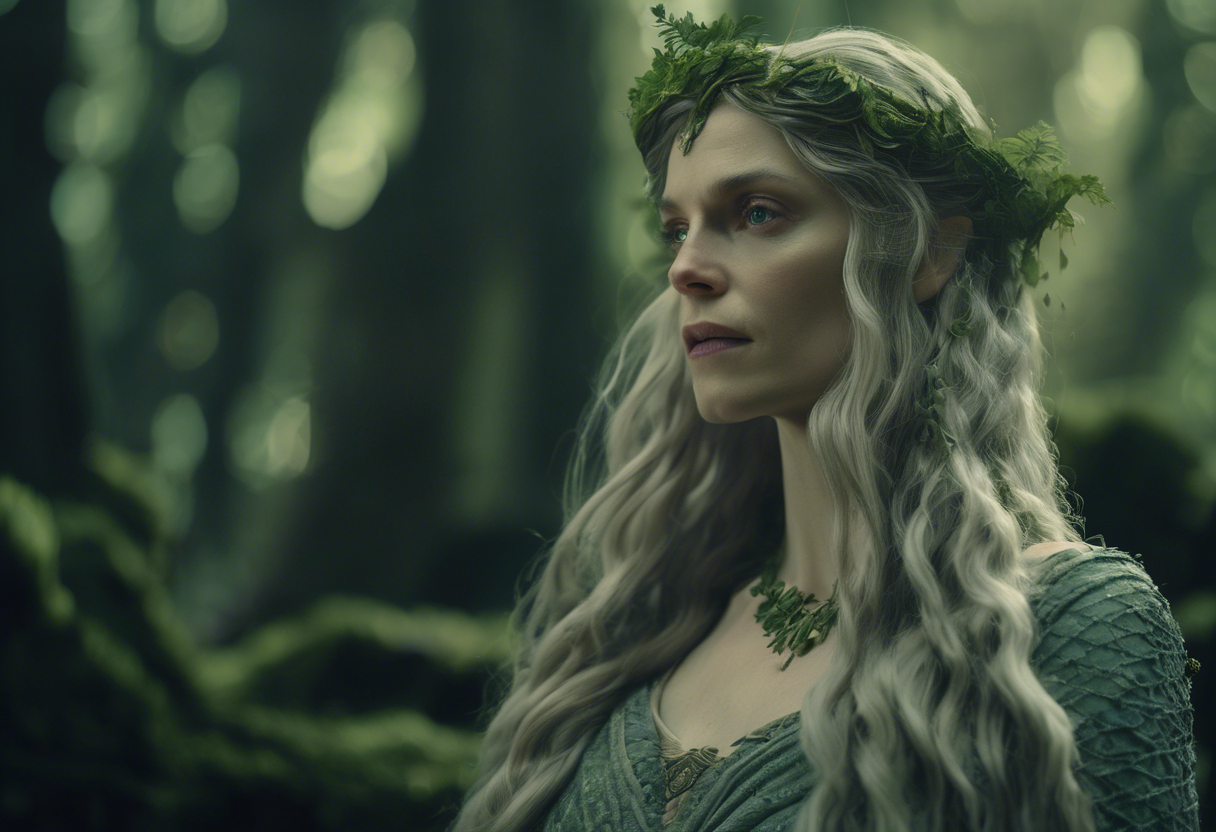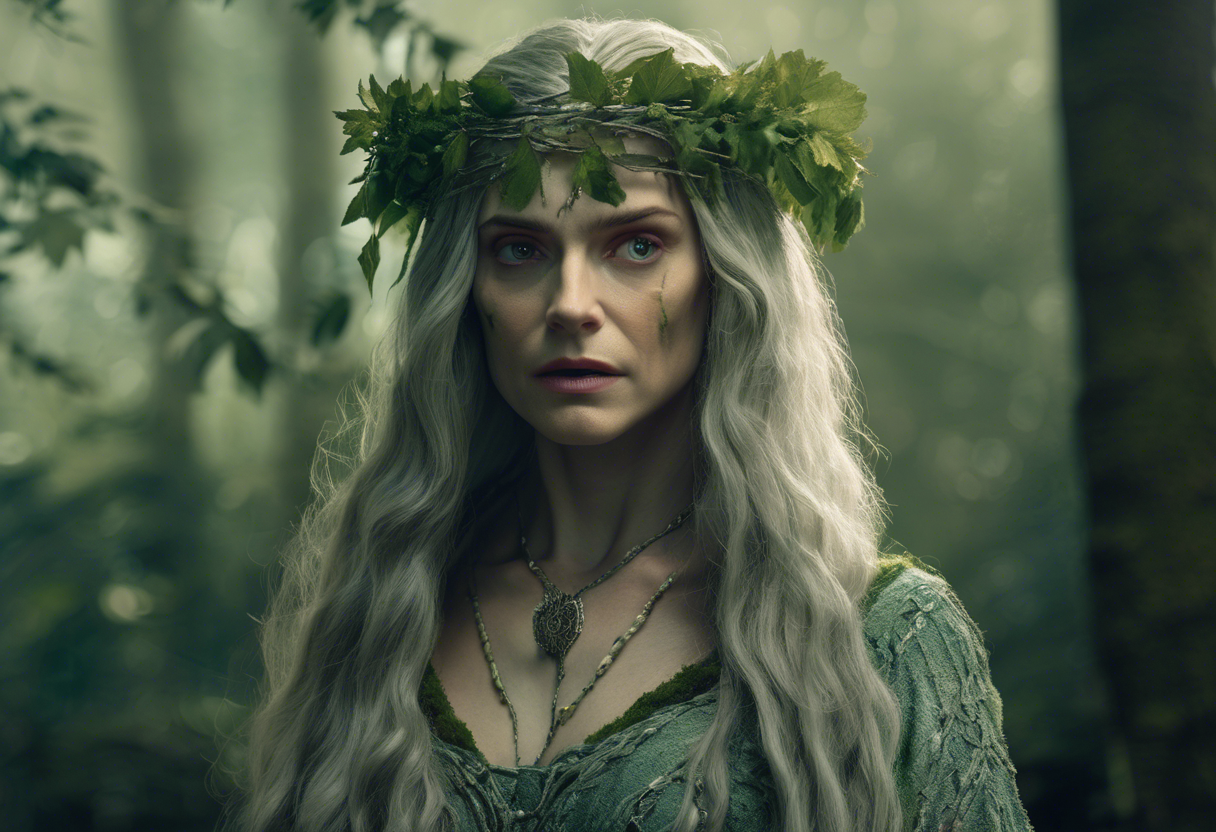Contents
Introduction
Eithne, the Queen of the Dryads, is a significant and intriguing character in the Netflix series The Witcher, based on the book series by Andrzej Sapkowski. Eithne is the leader of the dryads, a group of female warrior creatures residing in the Brokilon Forest, a sacred and ancient woodland. This character draws from Greek mythology and adds a unique layer to the rich fantasy world of The Witcher.
Eithne’s origins are deeply rooted in the lore of the Continent, where dryads are depicted as non-human, entirely female beings who protect their forest home against the encroaching human settlements. Her backstory, though not extensively detailed in the series, is inferred through her actions and interactions, particularly with Ciri, the young princess of Cintra. Eithne’s defining traits include her intelligence, wisdom, and fierce dedication to her people and the forest they inhabit.
Within the narrative, Eithne plays a crucial role in Ciri’s journey, providing her with temporary refuge and guidance in the Brokilon Forest. This encounter is pivotal as it highlights Eithne’s protective nature and her deep connection to the natural world, themes that resonate throughout the series.
Role in the Series
Eithne’s storyline in The Witcher is primarily centered around her interactions with Ciri. In the fourth episode of the first season, "Of Banquets, Bastards and Funerals," Ciri, fleeing from her pursuers, enters the Brokilon Forest, which is under Eithne’s protection. Eithne confronts Ciri for trespassing but ultimately allows her to stay for a time before Ciri leaves with Mousesack, a druid who has been caring for her [1][3].
Eithne’s role is not limited to this single encounter; she represents the broader conflict between the natural world and the expanding human settlements. The dryads, under her leadership, are engaged in a futile war against humans, highlighting the themes of protection, preservation, and the clash between different worlds.
Eithne’s relationships with other characters, though limited, are significant. Her interaction with Ciri showcases her maternal and protective instincts, while her stance against human encroachment underscores her commitment to her people and the forest.
Character Analysis
Eithne’s personality is characterized by her wisdom, intelligence, and strong leadership. She is depicted as one of the smartest characters in the series, making her a formidable figure in the world of The Witcher [1].
Her motivations are rooted in the protection of her people and the Brokilon Forest. Eithne’s actions are driven by a deep sense of responsibility and a fierce determination to preserve the natural balance of the forest. This dedication makes her a compelling character, as her motivations are clear and relatable.
Eithne’s strengths include her strategic thinking and her ability to make tough decisions. Her leadership is evident in how she manages the dryads and defends their territory against human threats. However, her flaws might include a certain rigidity in her stance against humans, which could be seen as limiting her ability to form alliances or find alternative solutions.
Despite these traits, Eithne remains a relatable character due to her emotional depth and the moral complexity of her actions. Her character adds a layer of depth to the narrative, highlighting the complexities of conflict and the importance of preserving natural habitats.
Themes and Symbolism
Eithne embodies several key themes in The Witcher series. One of the most prominent is the theme of protection and preservation. Her role as the guardian of the Brokilon Forest symbolizes the struggle to maintain the balance between nature and human expansion. This theme is central to the series, as it reflects broader environmental and societal issues.
Another theme associated with Eithne is the concept of community and maternal care. Her interaction with Ciri shows a maternal side, where she provides shelter and guidance, highlighting the importance of community and the role of female leaders in protecting and nurturing their people.
Eithne also symbolizes the clash between different worlds, representing the non-human, natural world against the encroaching human societies. This dichotomy is a recurring theme in The Witcher, reflecting the complexities of coexistence and the consequences of human actions on the environment.
Cultural Impact
Eithne’s character has a significant cultural impact, particularly in how she is received by fans and portrayed in adaptations. Her introduction in the series was met with interest, as fans of the books were eager to see how the dryads and their queen would be adapted for the screen.
The portrayal of Eithne by Josette Simon in the first two seasons and later by Lorna Brown in the third season has been notable. The initial portrayal was praised for its authenticity, though some critics felt the dryads appeared too human. The re-design in Season 3, including new costumes and prosthetics, aimed to make the dryads more fantastical and true to their mythological roots [5].
Eithne’s influence on popular culture is seen in how she represents strong female leadership and environmental protection. Her character archetype—wise, protective, and fiercely dedicated—has resonated with audiences, making her a memorable and impactful figure in the series.
Critical Reception
The critical reception of Eithne has been generally positive, with praise for her character’s depth and significance in the narrative. Critics have noted her importance in Ciri’s journey and the broader themes she represents.
However, there have been some controversies and varying interpretations. Some viewers felt that the dryads, including Eithne, were not fantastical enough in their initial portrayal, leading to a re-design in later seasons. This change was welcomed by many, as it better aligned with the mythological origins of the dryads [5].
Overall, Eithne’s character has been well-received for her complexity and the themes she embodies. Her role in the series has added a rich layer to the narrative, making her a beloved and significant character.
Legacy
Eithne’s enduring appeal lies in her representation of strong female leadership, environmental protection, and the clash between different worlds. Her character has inspired discussions about the importance of preserving natural habitats and the role of non-human entities in fantasy narratives.
In contemporary discussions, Eithne’s character serves as a symbol for environmental activism and the need for balance between human activities and natural preservation. Her legacy extends beyond the series, influencing how similar characters are portrayed in other works of fantasy.
Eithne’s impact on character archetypes is also notable. She represents a type of wise, protective leader that is both fierce and compassionate, a model that can be seen in other female characters in fantasy literature and media.
References
- https://screenrant.com/witcher-show-netflix-cast-character-guide/
- https://en.wikipedia.org/wiki/The_Witcher_(TV_series)
- https://redanianintelligence.com/2019/11/25/josette-simon-eithne/
- https://www.imdb.com/title/tt5180504/characters/nm0800219
- https://redanianintelligence.com/2024/06/01/not-just-geralt-heres-every-character-recast-in-the-witcher/







